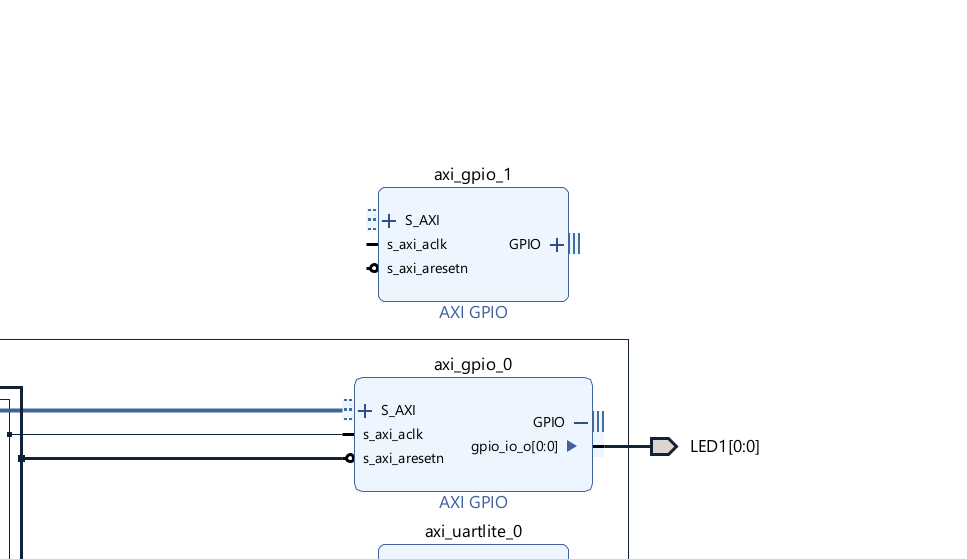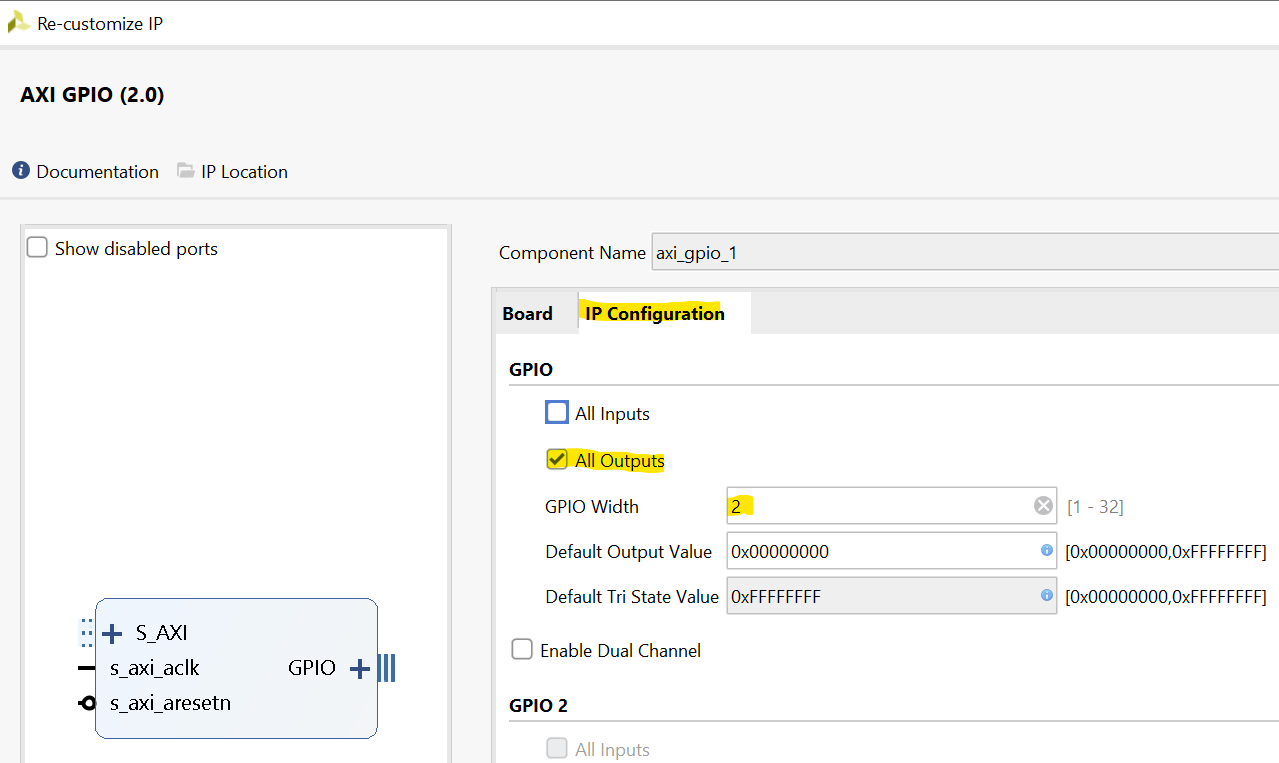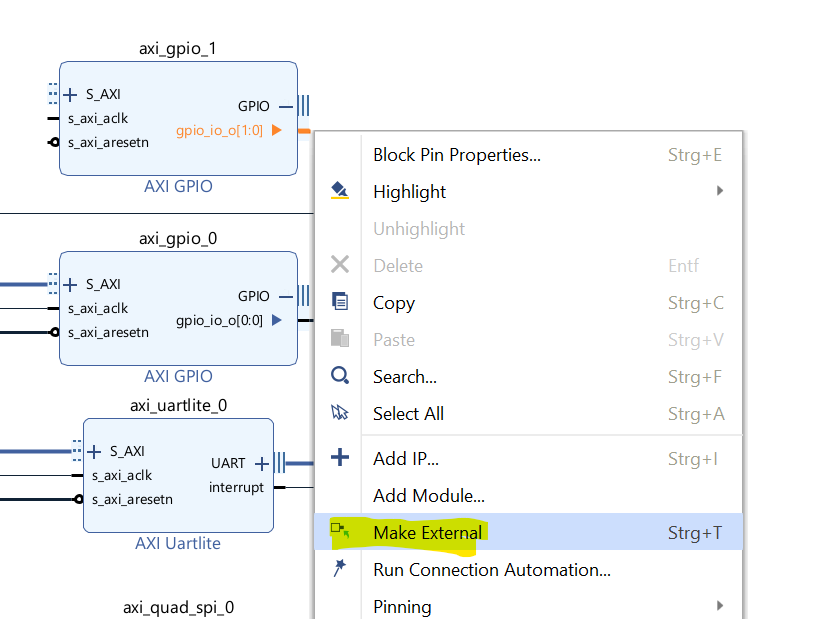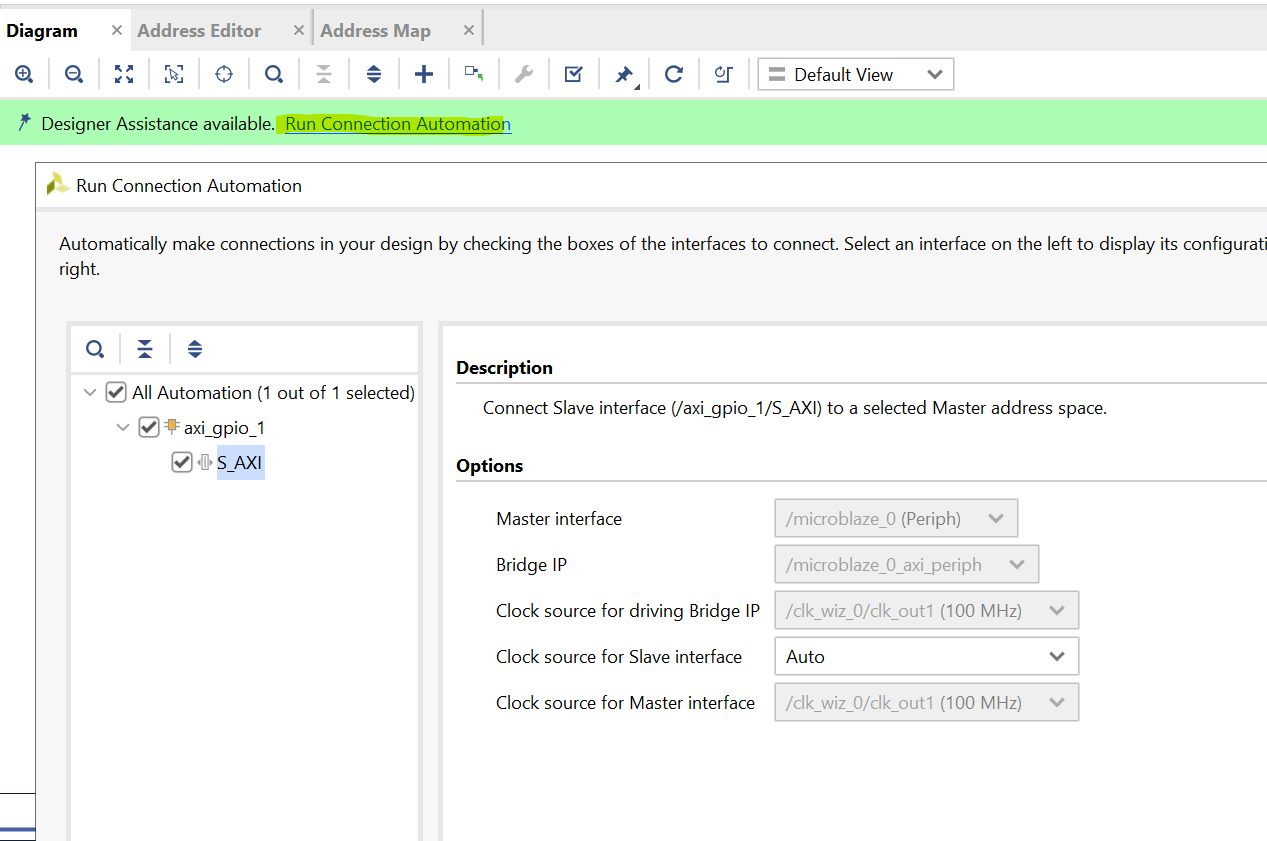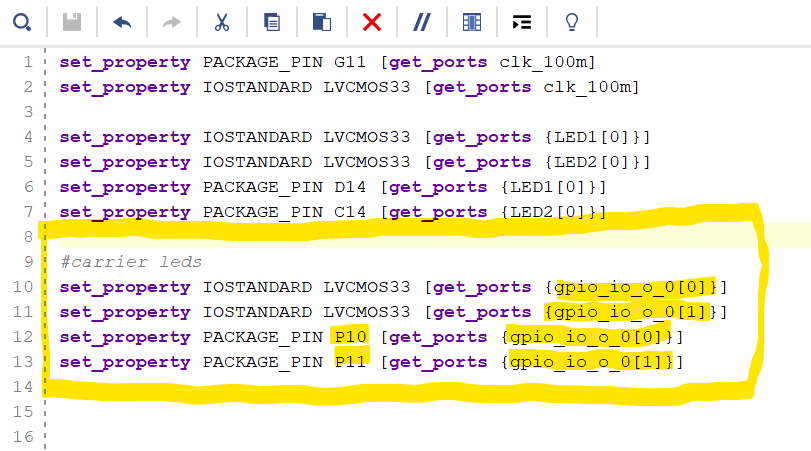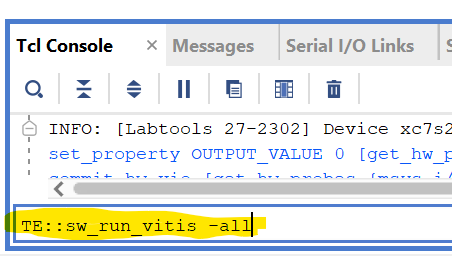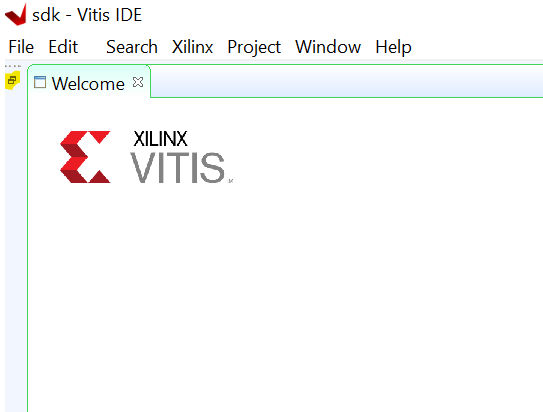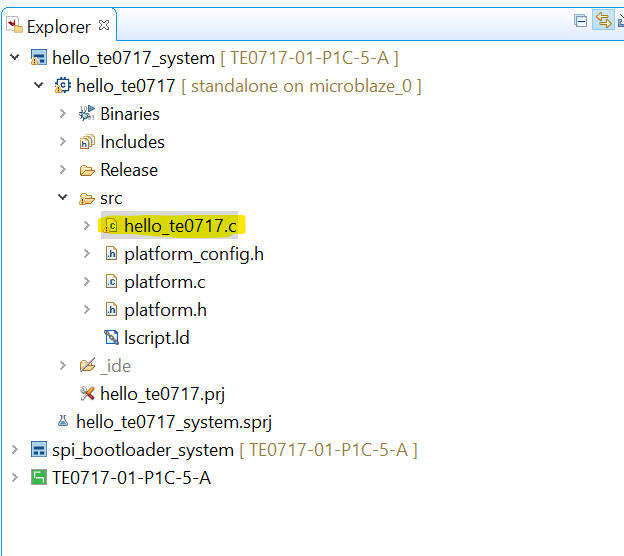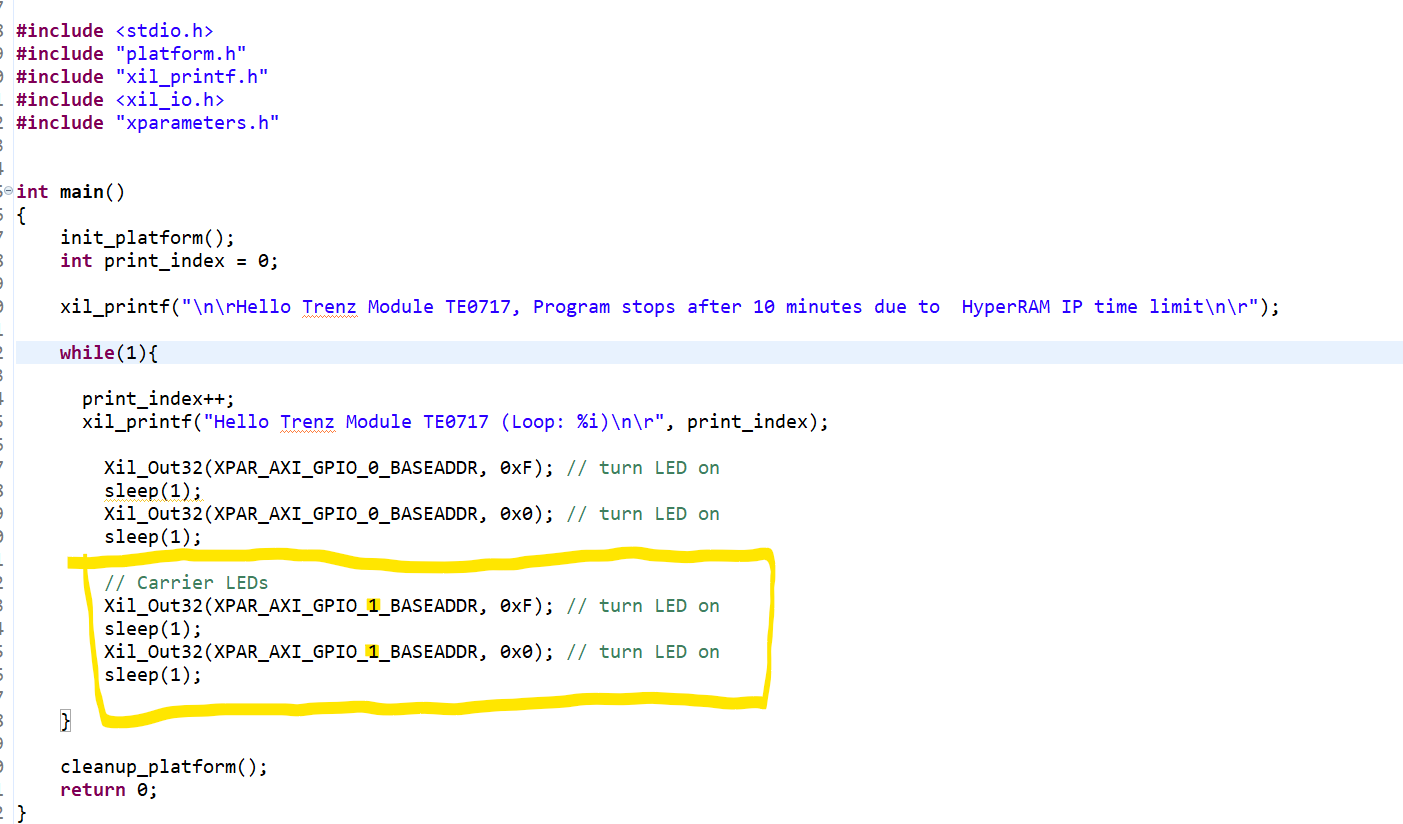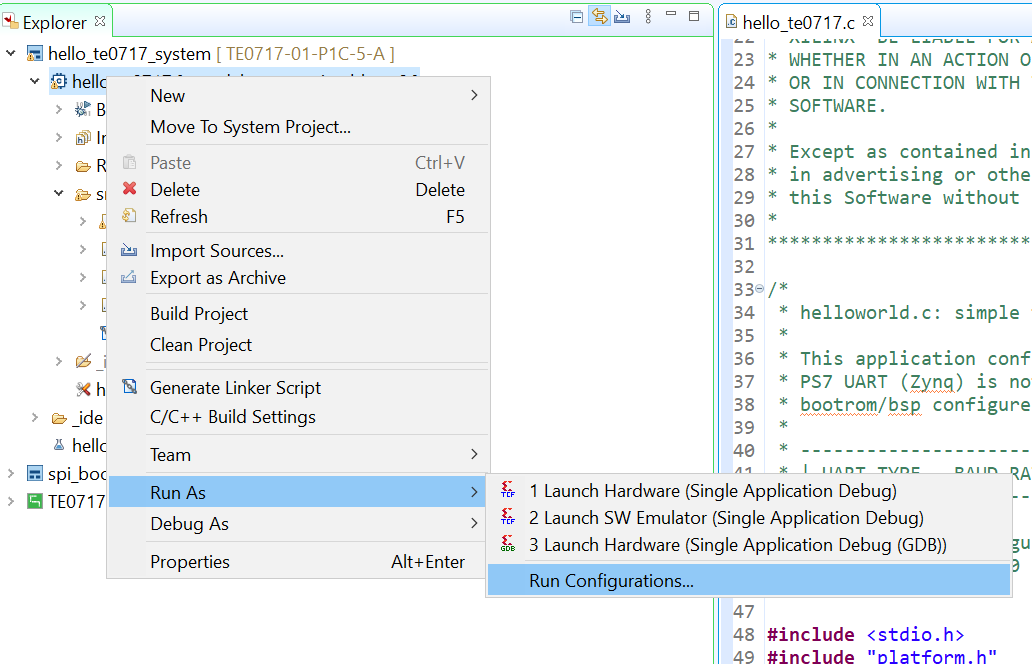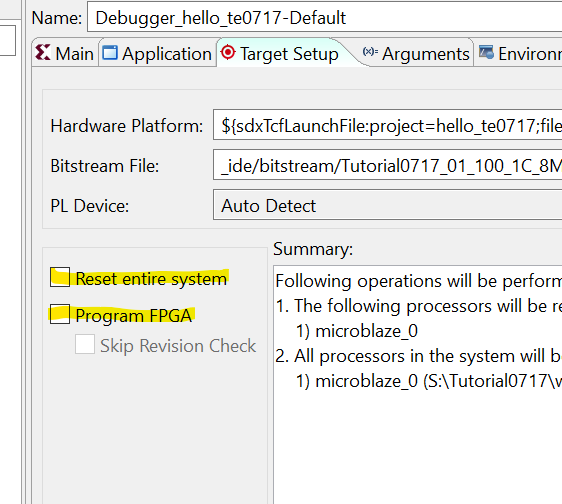Page History
...
- First open the prebuilt reference design with the "_create_win_setup.cmd" script and open the block design.
Add a second "AXI GPIO IP" from the IP catalog to the block design.
Scroll Title anchor Figure_BD title Figure 1: Adding AXI GPIO IP Core Configure the IP by double-clicking on the IP. Make the changes and click "ok".
Scroll Title anchor Figure_BD title Figure 2: AXI GPIO IP Core Configuration Right click on the port and choose "Make external" in the context menu
Scroll Title anchor Figure_BD title Figure 3: Make the AXI G Figure 3: PIO GPIO Ports external for the Carrier LEDs Run the connection automation. The AXI GPIO IP Core gets connected to the MicroBlaze via the AXI Interface.
Scroll Title anchor Figure_BD title Figure 4: Run Connection Automation Now the address mapping in the address editor should be set like:
Scroll Title anchor Figure_BD title Figure 5: Address Editor - AXI GPIO 1 Next, the constraints for the two leds have to be set in the constraint file.
Scroll Title anchor Figure_BD title Figure 6: LEDs constraints Now you are all set in Vivado and you can build the bitstream + export the project to Vitis with the following command in the TCL-console(only possible in the script-based reference design from trenz).
Manual steps would be to Generate the Bitstream and export the hardware platform.Scroll Title anchor Figure_BD title Figure 7: Build bitstream and export project After that was successful you can test the functionality of the VIO Core by programming the FPGA and controlling the onBoard LED2.
Otherwise continue with Step 10.Scroll Title anchor Figure_BD title Figure 8: Program FPGA and control onboard LED through the VIO IP Core. Now you can build the Vitis project with the provided C/C++-Applications with the following command.
Manual steps would be to Open Vitis(Tools → Launch Vitis IDE) and import the project from the project directory.Scroll Title anchor Figure_BD title Figure 9: Build Vitis project with built vivado design In Vitis open the hello_te0717 application:
Scroll Title anchor Figure_BD title Figure 10: Vitis hello_te0717 Add the following lines of code to also make both of the LEDs blink:
Scroll Title anchor Figure_BD title Figure 11: hello_te0717 adding code for controlling carrier LEDs - Save and Build the project
Right-Click on the application and choose "Run Configuration"
Scroll Title anchor Figure_BD title Figure 12: Run Configuration Since we already programmed the FPGA, uncheck the following:
Scroll Title anchor Figure_BD title Figure 13: Run Configuration - Uncheck - Click on Apply and Run to execute the program on the MicroBlaze. You Should now see the LEDs of the module and carrier blinking in sequence.
Also if you open up a serial connection to the board with a program like PuTTY, you should see output
